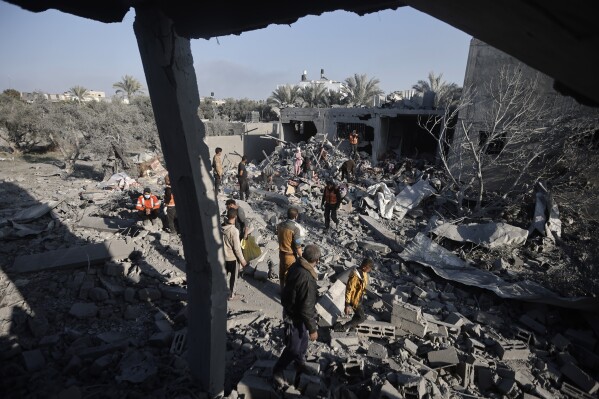Russia Bombards Kyiv with Hypersonic Kinzhal Missile Onslaught
Russia launched hypersonic Kinzhal missiles at the Ukrainian capital overnight, Kyiv's air force said on Tuesday, in the latest exchange of missile strikes between Russia and Ukraine.
Moscow fired at least 10 air-launched Kinzhal, or "Dagger," missiles at Kyiv in the early hours of Tuesday from around 7:30 a.m. local time (12:30 a.m. ET) as part of a wider missile and drone barrage, according to the head of Ukraine's air force and Kyiv officials.
"Critical infrastructure facilities, industrial, civilian and military facilities were attacked," Lieutenant General Mykola Oleschuk said in a statement. "The main direction of the attack is the capital of Ukraine."
Two people were confirmed dead and 43 more were injured in and around Kyiv as of 12:40 p.m. local time (5:40 a.m. ET), according to Kyiv authorities. Ukraine's Kharkiv region was also struck by Kinzhal missiles, local officials said.
Moscow fired almost 100 missiles at Ukraine on Tuesday, and "at least 70" were intercepted, Kyiv's military administration said. Almost 60 of these were in the Kyiv region, it added, saying: "Kharkiv was also hit hard."
Russia first launched a wave of kamikaze drone strikes before the missiles headed for the capital, Ukrainian officials said. Parts of Kyiv lost access to power and water, with several buildings reportedly damaged.
Newsweek has reached out to the Russian Defense Ministry for comment via email.
The strikes early on Tuesday are the latest in a string of spiraling exchanges between Russia and Ukraine.
On December 29, Ukrainian President Volodymyr Zelensky claimed the Kremlin had launched its most intensive strikes of the more than 22-month-old war. Close to 160 missiles and strike drones were launched at Ukraine in the barrage, he said.
Ukraine intercepted 114 out of 158 incoming targets, Ukraine's Oleschuk, said in a statement late last week. Ukraine shot down 86 Kh-101, Kh-55 and Kh-555 missiles as well as 27 Iranian-designed Shahed drones, he added.
The missile strikes early on Tuesday "repeated the attack of December 29," Oleschuk said.
"Another powerful massive strike on Kyiv," added Colonel General Serhiy Popko, the head of Kyiv's military administration. "The second in a row with the use of a large arsenal of air weapons."
Ukraine responded to the December 29 strikes with what Russia called an "indiscriminate combined strike" on the Russian border city of Belgorod. A Ukrainian security source told the BBC that more than 70 drones were launched in "response to Russia's terrorist attacks on Ukrainian cities and civilians," and that Kyiv had only targeted military infrastructure.
Moscow then said it had retaliated with another round of strikes, including an assault on "decision-making centers and military facilities" in Kharkiv. The Kremlin said its missiles killed members of Ukraine's intelligence services and its military who "were directly involved in the planning and execution of the terrorist attack in Belgorod."
The Kremlin has touted the Kinzhal, also known by its NATO moniker, "Killjoy," as hypersonic and unstoppable. The missile, Russia says, has a range of up to 1,240 miles and can travel at speeds of up to 10 times the speed of sound.
The Kinzhal was unveiled by Putin in 2018 as part of a raft of "next generation" weapons. But Western experts say that Moscow's labeling of the missile as hypersonic is misleading, and that it may not be quite as invulnerable to air defenses as has been claimed.
They quickly became a regular feature of Russian missile strikes on Ukraine, shortly after the Kremlin launched its full-scale invasion of the country in February 2022.
But in October, the British Defense Ministry said the Kinzhal "effectively remains in operational testing, with its performance in Ukraine to date being poor."
It is still "highly capable on paper," but "there almost certainly needs to be significant improvement in how Russia uses it" to wield it is as designed, the U.K. government said.
Disclaimer: The copyright of this article belongs to the original author. Reposting this article is solely for the purpose of information dissemination and does not constitute any investment advice. If there is any infringement, please contact us immediately. We will make corrections or deletions as necessary. Thank you.

